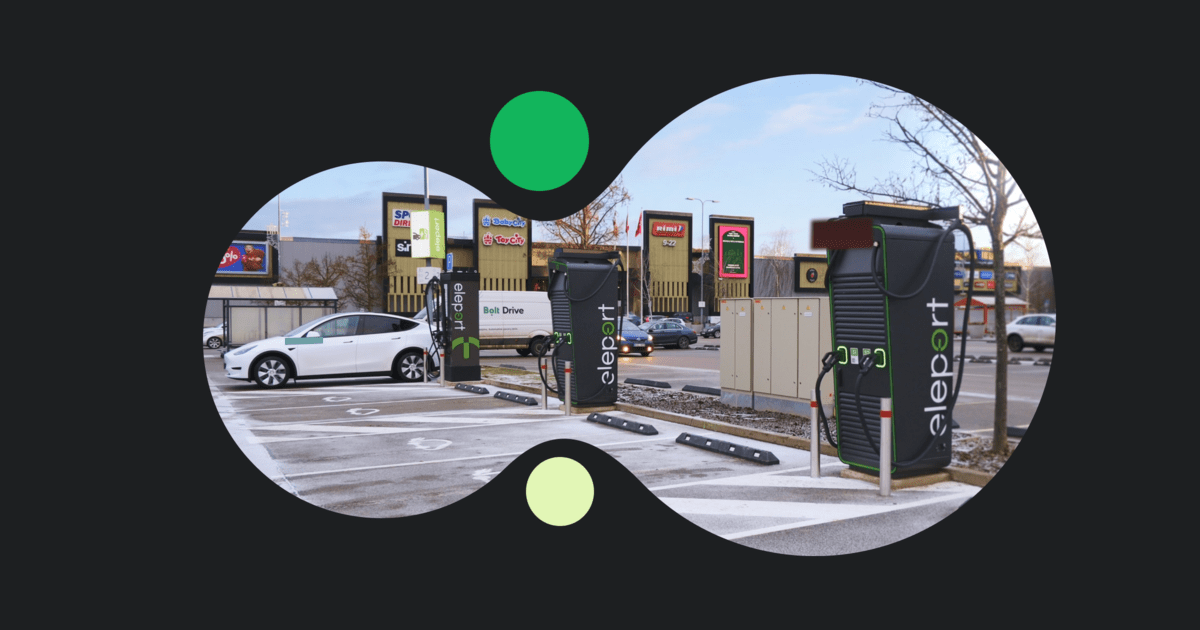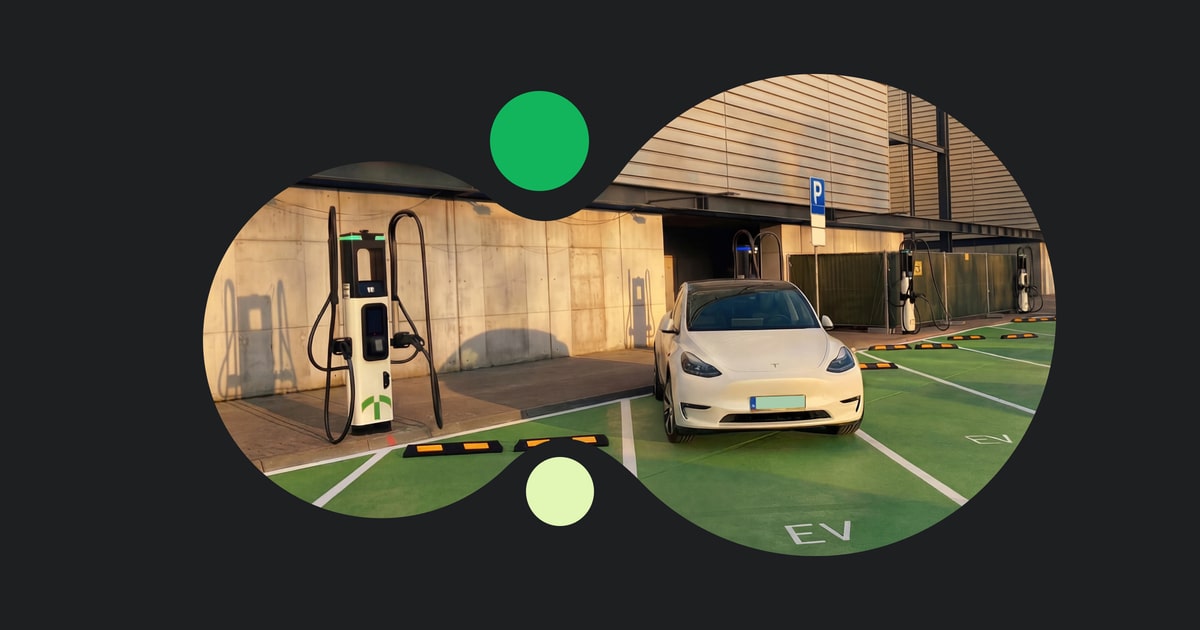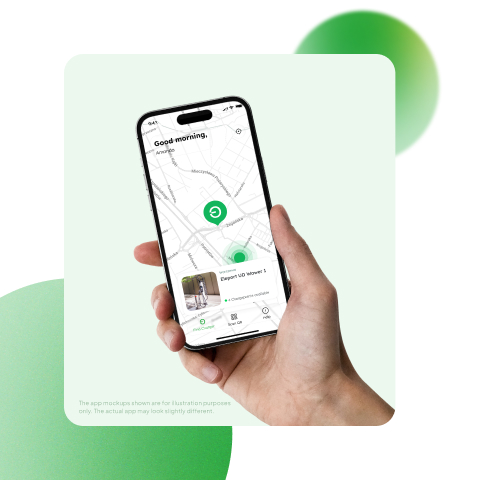We all know those few anti-EV folks who tell you they’ll buy an EV when it does 1,000 kilometers on a charge. If you’re reading this, however, you are likely more like us and don’t see an issue driving your EV for long distances. In fact, many of us are crazy enough to go for a cross-Europe road trip with our electric cars instead.
An ICE car driver can drive until the tank is nearly empty and be rather confident there’s another fuel station by the road soon enough. Yet even with more than a million public charge points in Europe today (per IEA 2024), there is not enough coverage yet to let you just wing it.
At the very least, this might lead to inconveniences of finding a charger faulty, inaccessible, or too slow for your needs.
In this article, we’ve gathered the best ways to plan your EV road trip in Europe in 2025. From the EV route planning app that takes your EV model and all the details into account, to ensuring you can actually access and pay at the chargers. On a road trip, you really might need more than just your favorite EV charging app.
Yes, some cars can also do it all internally. Tesla’s Trip Planner benefits from knowing the battery % to the decimal, knowing any Supercharger site occupancy in real time, auto-heating the battery en route, and also displays some of the third-party charging networks in Europe now.
While Mercedes, BMW, and some others are also already getting there, and the integrations within the industry keep popping up, most EV drivers still need some extra help for route planning, and even Tesla drivers sometimes combine tools for backup.
We have found the golden rule for 2025 is simple: pair any best EV route planning app with at least one roaming “wallet” app, which lets you pay at unfamiliar chargers the moment you cross a border.
Below you’ll find the tools that cover those two jobs, plus regional maps and community layers that save the day when Plan A of your EV road trip goes sideways.
A Better Routeplanner (ABRP)
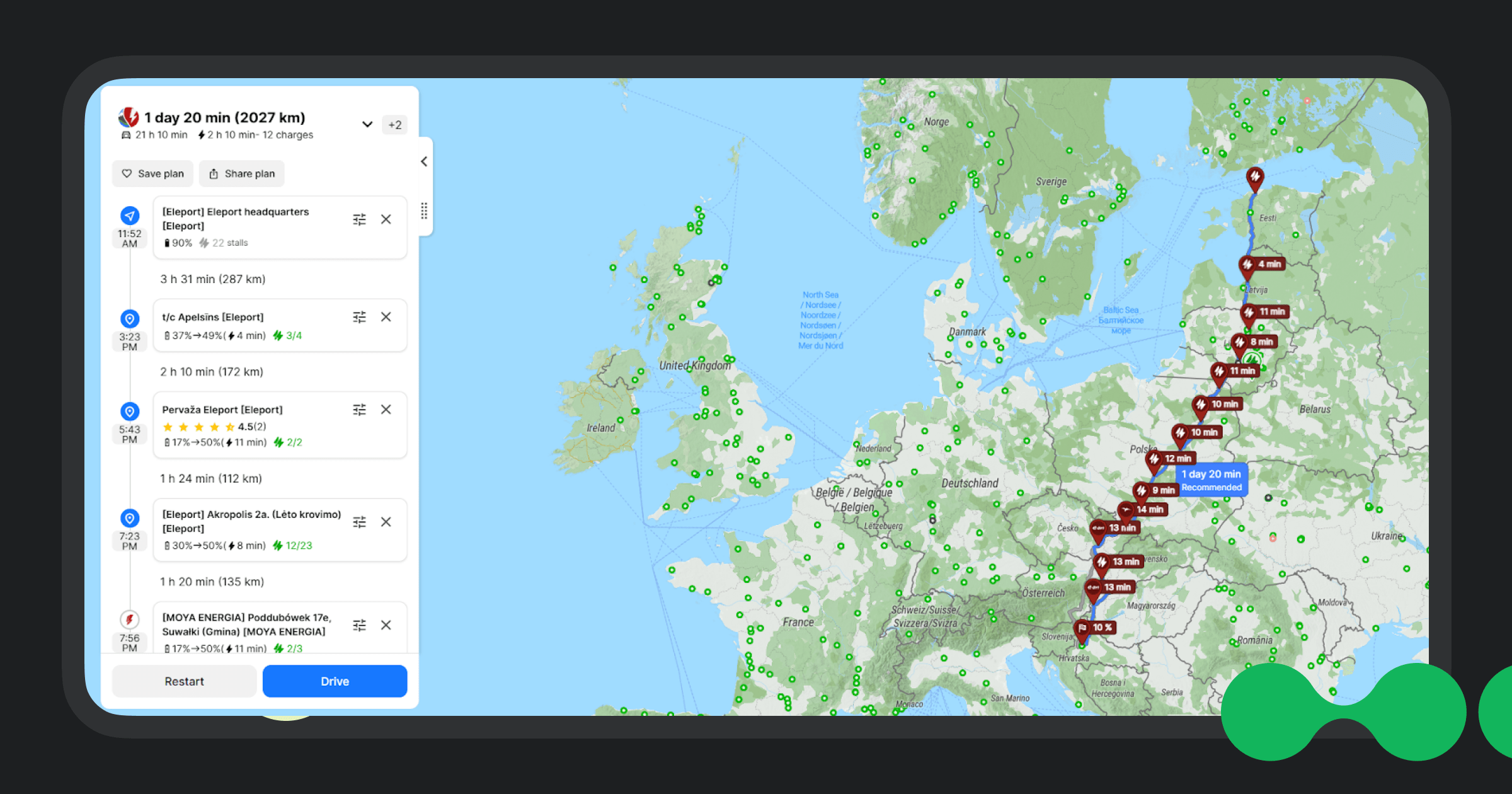
ABRP tool
Best for: Deep, battery-aware EV route planning for any country
Use it on: iOS, Android, Web, CarPlay / Android Auto overlay
Cost: Free basic planning or €5/month Premium subscription (gives you live State of Charge + auto-reroute)
Born in Sweden in 2016 and acquired by the US-based Rivian in 2023, ABRP remains the best app for EV route planning in the eyes of thousands of EV drivers. Free users can input their EV model, current charge level, the destination arrival charge level, and preferred charging stop timing to get a stop-by-stop plan. This is one of the few dedicated EV route planning apps out there that isn’t tied to other charging services.
The premium offering offers more granular controls, pulls live battery data for a wide selection of EV models from Tesla, VW, Hyundai, Volvo, Ford, and more, overlays in CarPlay/Android Auto, and auto-swaps charging stops if a stop fails or anything changes. Tesla drivers can feed the ABRP planner a Tesla API token, giving even finer accuracy to the planner.
Chargetrip Route Planner

Chargetrip Go
Best for: Battery-aware guidance that also goes far into details;
Use it on: Web demo, also powers Ionity, Electra, Plugsurfing, etc
Cost: Free in supported cars, API licensed to fleets and networks
Chargetrip has created the Chargetrip GO, which you can use to go very deep into details like with the ABRP above, as you can even set the number of occupants, climate control usage, and additional weight to be calculated in. Chargetrip calculates the weather and elevation change effect on your EV range for the route planned. It also gives you an overview of the expected pricing of the chargers and calculates how much CO2 you’re avoiding with this trip compared to a similar ICE vehicle model.
Chargetrip’s engine also powers the route planners for Ionity, Electra, Shell Recharge, Plugsurfing, and others. So chances are you’ve used it even if you’ve never opened the Chargetrip website
For unsupported cars, you can experiment on the free web demo, export the GPX file, and load it into Google Maps or TomTom GO. One of Chargetrip’s tools, the Range Spider, adds perfectly to the EV route planning functionalities. It shows a map overlay with info on exactly how far your car can reach right now based on a variety of factors like the weather, elevation, etc. That might come in handy if you’re thinking of reaching a point of interest.
Google Maps
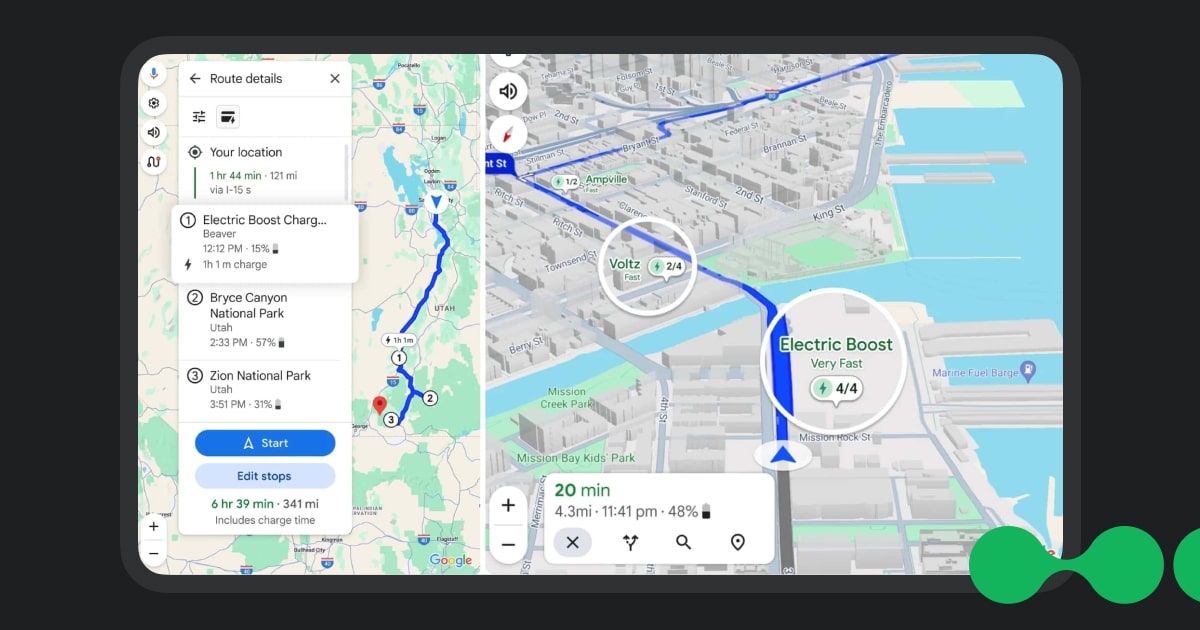
Best for: One-tap routing in Android Automotive cars
Use it on: Android Automotive dashboards, Android Auto, iOS app, Web
Cost: Free
In cars running Android Automotive natively, like the EVs from Polestar, Volvo, Renault, and MG, Google Maps now displays charging stops on the route automatically when entering the destination, and shows live plug counts in 28 European countries. When it comes to EV route planning, Google Maps reroutes you without fuss when it finds a station is full or offline.
The phone version mirrors that logic, and you can also just search “fast charging near me” to see how well Google handles mapping out the chargers. It does however still ignore elevation and extreme weather when guessing arrival battery level, so ABRP or Chargetrip might serve as a good safety net. Charger filters offer you to choose your plug type, but otherwise remain basic (“fast” versus “very fast”), and prices aren’t shown, but the blend of Google’s traffic data and instant rerouting can save some headaches in city traffic.
Apple Carplay and Maps
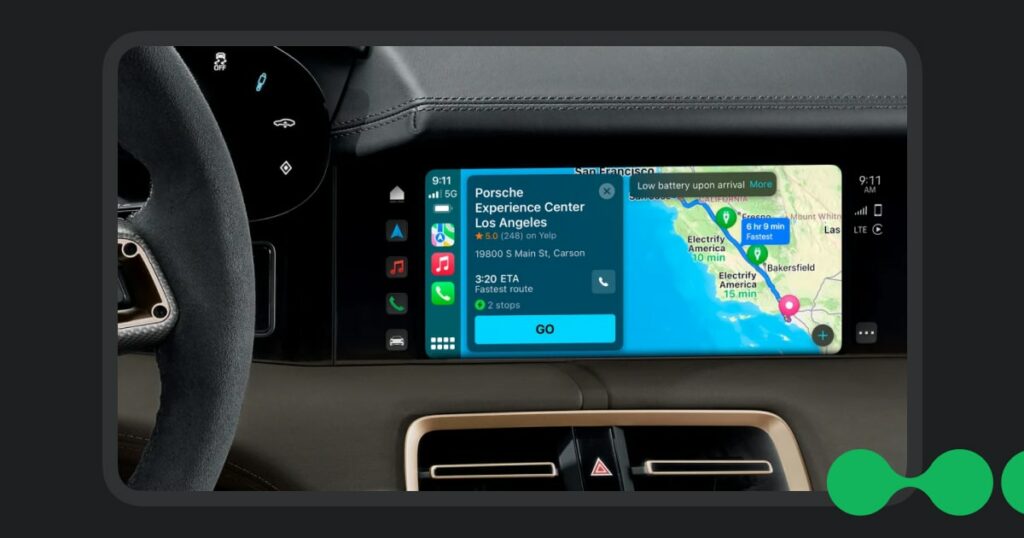
Porsche
Best for: Seamless CarPlay EV route planning in supported models
Use it on: iOS 18, CarPlay dashboards in Ford, Porsche, Mercedes, VW ID, and others
Cost: Free
Apple Maps now pulls live battery percentage via the Apple CarKey energy API. Enter a destination and Maps inserts charging stops that match your connector type, minimum power, and available amenities.
Apple does rerouting as easily as Google Maps here, so if the traffic situation changes or a charger goes offline, it picks a new station before you notice.
Offline maps are free, so you can navigate across borders without roaming data, yet live-status coverage is still not fully there on European chargers, and there is no price filter.
Most drivers pair Apple Maps with a roaming wallet to guarantee they can pay at the plug
TomTom GO Navigation
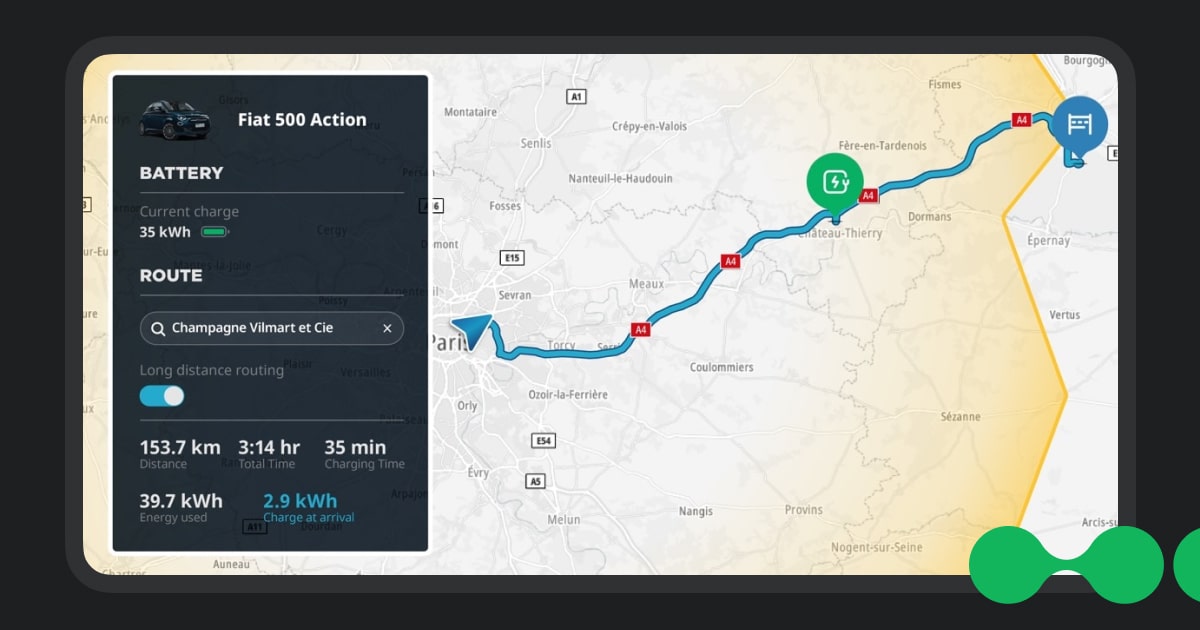
TomTom
Best for: Offline maps, when mobile data is patchy
Use it on: iOS, Android, Android Automotive dashboards (Renault, MG)
Cost: Free 30-day trial, then €9.99 per year
TomTom lets you download whole countries, so border crossings won’t strand your EV route planning efforts when your mobile roaming data vanishes. Switch on the EV profile, set the charge level you’re comfortable arriving with, and GO plans all charging stops that match your connector and minimum power.
Live traffic and charger status reappear the moment your phone regains a signal, and the route adjusts automatically. Coverage is strongest on Ionity, Fastned, Allego, EnBW, and French motorway networks; smaller CEE operators can be a little patchy, and the app still doesn’t show prices.
Octopus Electroverse
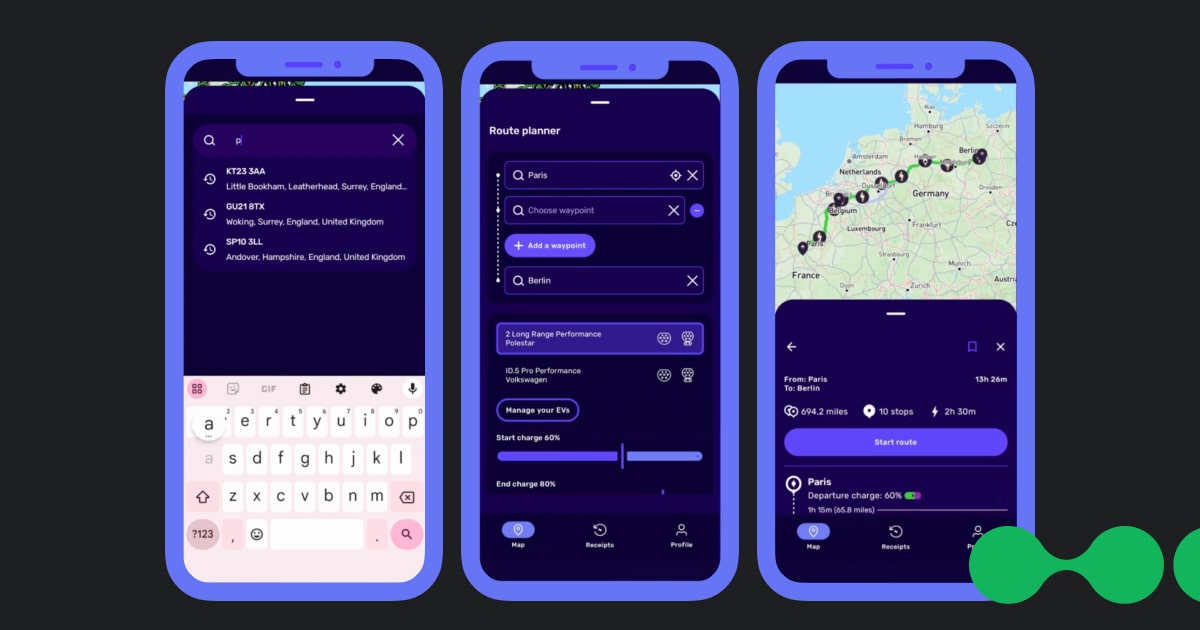
Electroverse
Best for: One roaming card, light route previews
Use it on: iOS, Android, CarPlay, Android Auto, free RFID card
Cost: App and RFID are free, pay per kWh (small service fee)
Electroverse started in the UK but now covers more than 650 000 charge points across forty countries. It also mails a free RFID tag to the driver, which starts sessions on hundreds of networks.
Their beta route-planner, added in spring 2025, lets you set your start and target charge levels, and then exports the trip straight to Google or Apple Maps. Prices appear in local currency before you plug in, and UK drivers who are Octopus Energy customers earn bill credits on every session. The planner doesn’t yet predict arrival charge level or automatically reroute from non-working sites, so most EV drivers keep ABRP or Google Maps EV route planning running in parallel.
Shell Recharge
Best for: Western-European roaming with a built-in route planner
Use it on: iOS, Android, RFID card, Android Auto dashboard
Cost: €0.35 start fee per session, or €2.99 per month Gold plan (no fee)
The rebranded NewMotion app now lists around half a million charge points and folds in a simple planner: choose your minimum power, target charge level, and price ceiling, and the app strings together suitable stops. You can also toggle to prefer the Shell Recharge Stations, naturally.
You can push the route to Google or Apple Maps and remote-start sessions from the Android Auto screen, so you never leave the dashboard. The RFID card works across 35 European countries; live status is reliable on Ionity, Allego, Fastned, and most municipal networks in Benelux and Germany.
Ovo Energy (formerly Bonnet)
Best for: Flat-rate kWh bundles across the UK and some EU countries
Use it on: iOS, Android, CarPlay, Android Auto (beta)
Cost: Free app, pay-as-you-go or “Boost” bundles from £7.99 per month
Rebranded after OVO Energy acquired Bonnet, OVO Charge lets you pre-buy 25 to 200 kWh blocks at a fixed price and redeem them on more than 40 000 rapid chargers in the UK, France, Belgium, the Netherlands, Germany, and Spain. The in-app route-planner, available in the premium subscription, filters by connector type, minimum power, and bundle pricing.
SparkAlliance
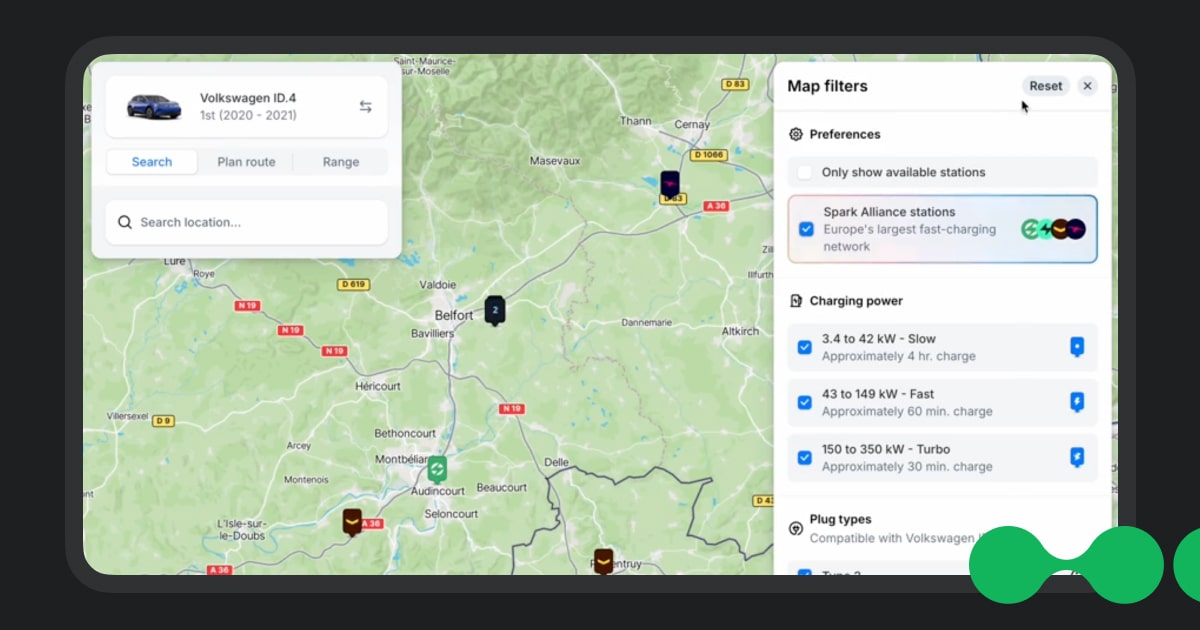
Chargetrip
Best for: Fee-free roaming on Europe’s 350 kW premium networks
Use it on: iOS and Android app (beta), NFC card arriving Q4 2025
Cost: One-off €9.99 card, no per-session surcharge on partner networks
Launched in spring 2025 by Ionity, Fastned, Atlante, and Electra, SparkAlliance unifies four of Europe’s fastest networks under a single login and billing system.
The app shows live stall counts across the four networks, real-time pricing, and lets you start a session with one tap.
A basic route-planning tool is likely on the roadmap, but today you’d still need to pair Spark with a specific network journey planner (like IONITY, which uses Chargetrip) or the other tools we’ve listed above. Chargetrip also integrated Spark Alliance to its planning tool, so you are able to filter by just Spark Alliance chargers. The alliance has said they aim to partner with map and navigation platforms to be able to be more easily found and routed to by EV drivers.
IONITY Route Planner
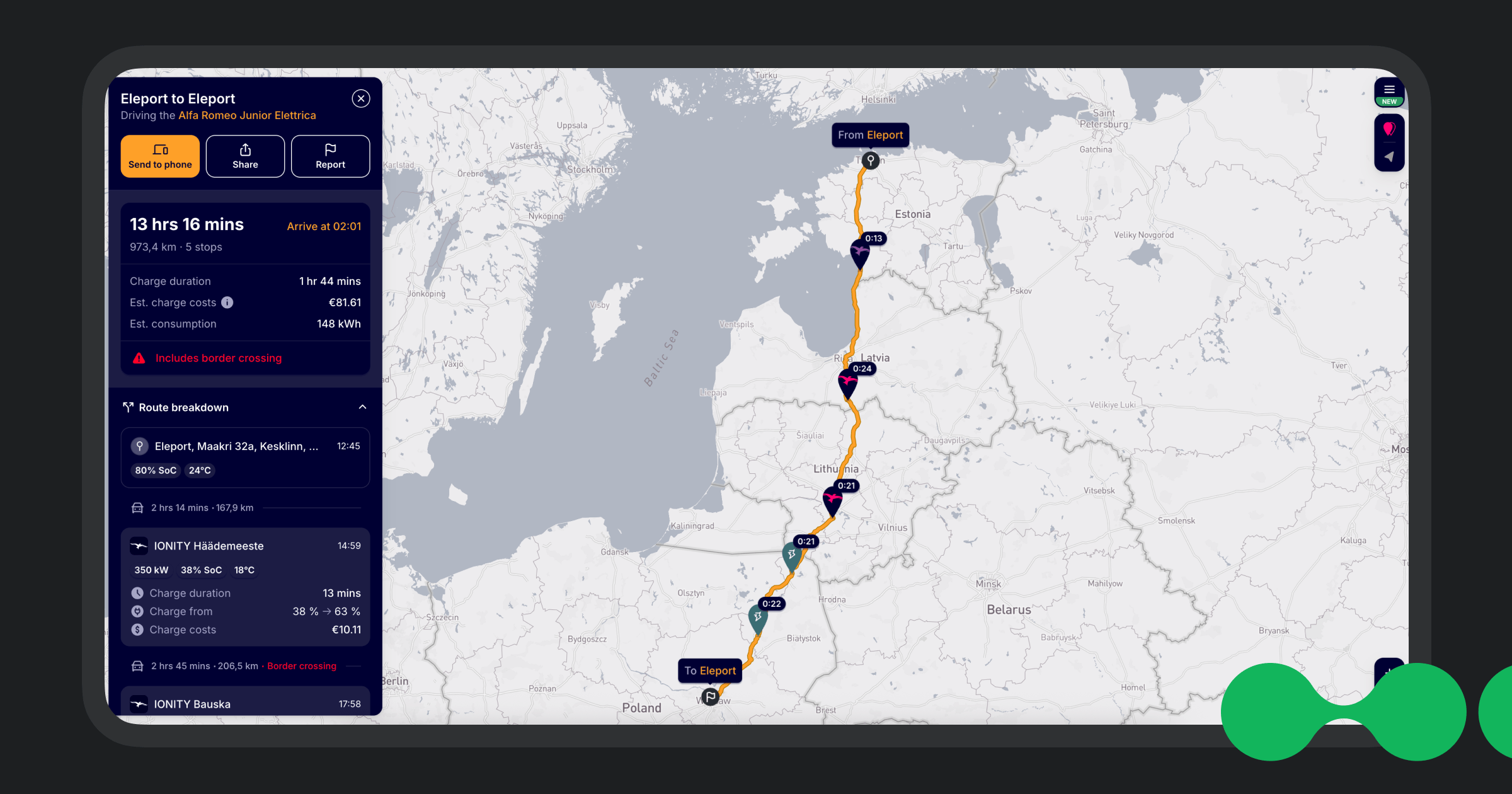
IONITY
Best for: Sticking to guaranteed 350 kW Ionity stops
Use it on: Website
Cost: Free
IONITY’s web planner is actually powered by Chargetrip’s routing engine, but filtering is locked to IONITY’s own 350 kW network, so every suggested stop delivers maximum power and Plug & Charge billing. Ionity’s charging network currently includes 5265 charging points in 763 locations across Europe.
On the route planner, you can enter your EV model, start, finish, and desired arrival charge level. The tool factors in weather and elevation, then exports the route to Google or Apple Maps.
You will be able to choose whether you see IONITY chargers only or if they are preferred. We’ve heard rumors in the industry of certain EV models soon getting the IONITY planner directly on the car’s screen in 2025 via an over-the-air update – stay tuned.
PlugSurfing
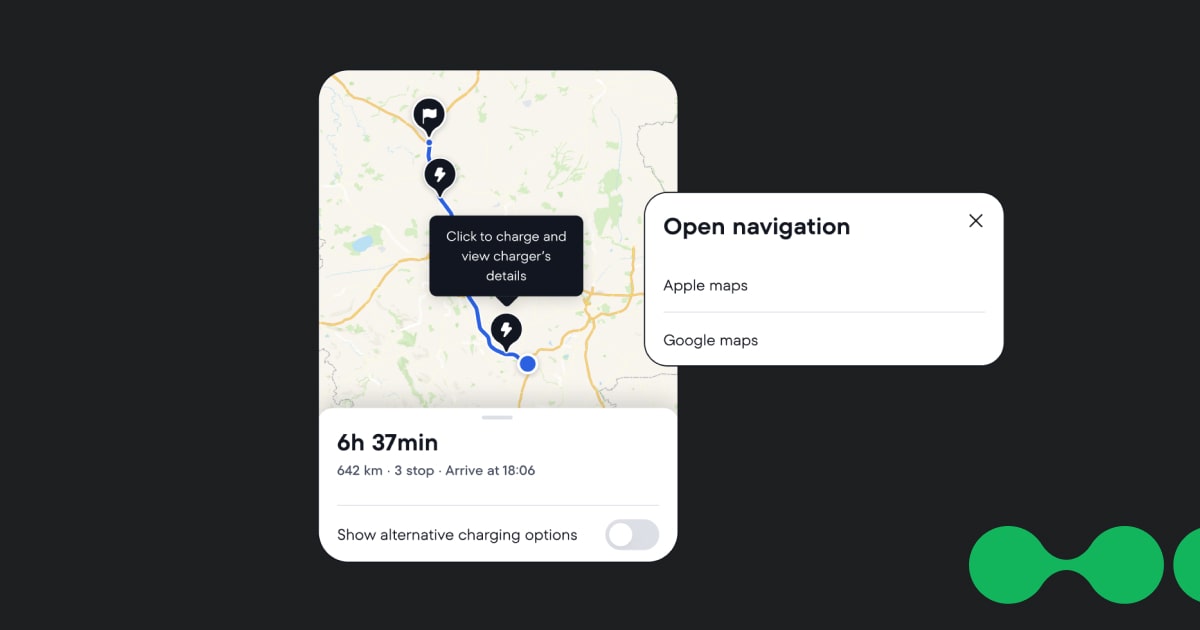
PlugSurfing
Best for: A universal RFID and app that “just pays”
Use it on: iOS, Android, Web portal, RFID key-fob
Cost: Free app, €0.35 start fee per session, €4.99/month “Flat” plan waives the fee
PlugSurfing is the safety net many EV veterans keep in the glovebox for paying. One RFID tag or in-app tap starts more than 600 000 charge points in forty European countries. Their map shows live status, connector type, and tariff in local currency. Plugsurfing also has a tool to plan your route which is based on Chargetrip’s data.
Electromaps
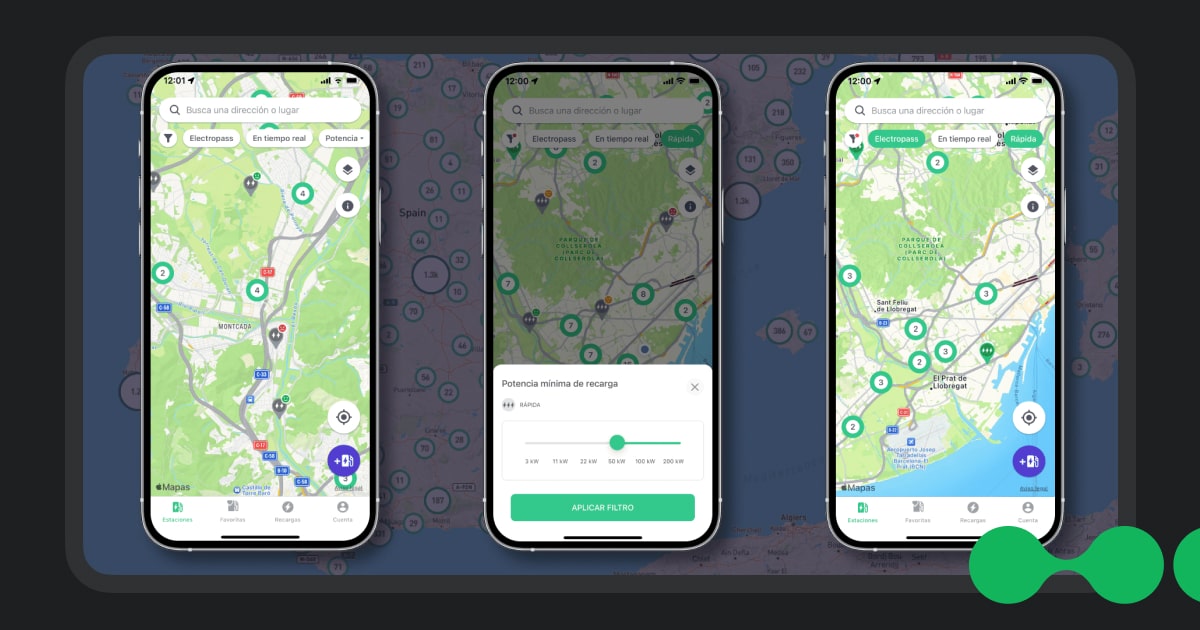
Electromaps
Best for: Community photos and real-time tips in Iberia and southern France
Use it on: iOS, Android, Web, and RFID called “Electric Passport”
Cost: Free app, RFID €19.95 one-off, pay per kWh (no monthly fee)
Electromaps lists roughly 400 000 public chargers, but its strength is depth: user photos, reliability votes, and live comments for nearly every plug on the Iberian Peninsula and along the Occitanie coast.
They do have a simple route-planning tool that lets you drop way-points and export them to Google or Apple Maps; power filters reach 400 kW, but there’s no live battery level integration.
ChargeFinder
Best for: “Show only free stalls” when chargers are busy, in the Nordics
Use it on: iOS, Android, Web
Cost: Free core map, €4.90/month Premium adds offline maps and dark-mode CarPlay
Built in Sweden, ChargeFinder taps live vacancy feeds from Fortum, InCharge, E.on, Circle K, and Tesla. If you hit the “Only available” toggle, the map hides every occupied plug. There isn’t a EV route planning tool available fully, but you can add manual way-points and export to Google Maps. The Premium tier unlocks offline maps, like for Norway’s mountain passes.
Zap-Map
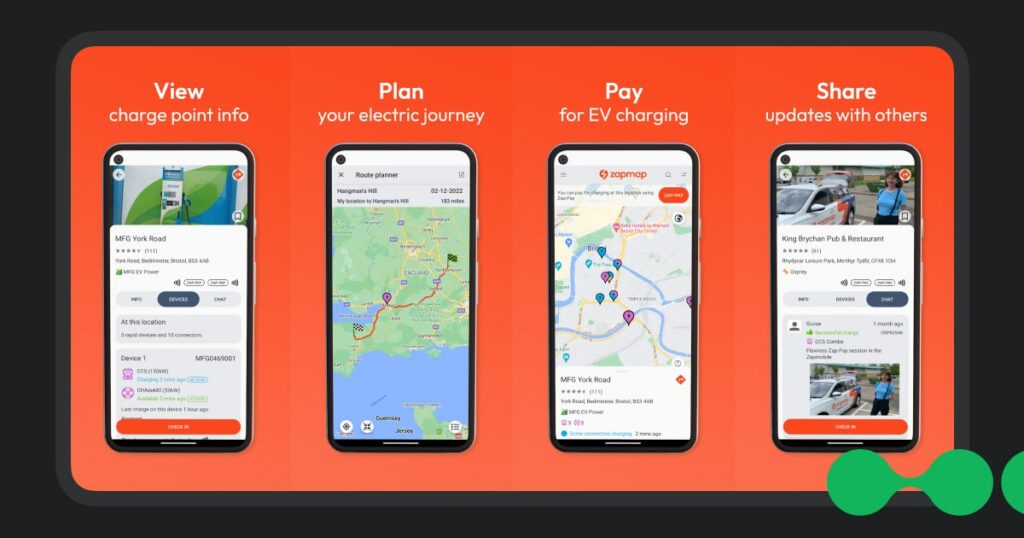
Zap-Map
Best for: Live status of chargers and pay-as-you-go, across the UK and Ireland
Use it on: iOS, Android, Web, CarPlay. and Android Auto (Premium)
Cost: Free map, £4.99/month Premium adds in-car live data
Zap-Map’s data feed covers almost every public network in Britain and Ireland. The in-app EV route planning tool shows the estimated arrival charge level and lets you filter by power, connector, and cost. Premium subscription also shows live status in CarPlay or Android Auto and overlays national traffic.
With Zap-Pay, you can start sessions on twenty-plus networks without an extra RFID, making it the UK driver’s default payment wallet.
PlugShare EV Trip Planner
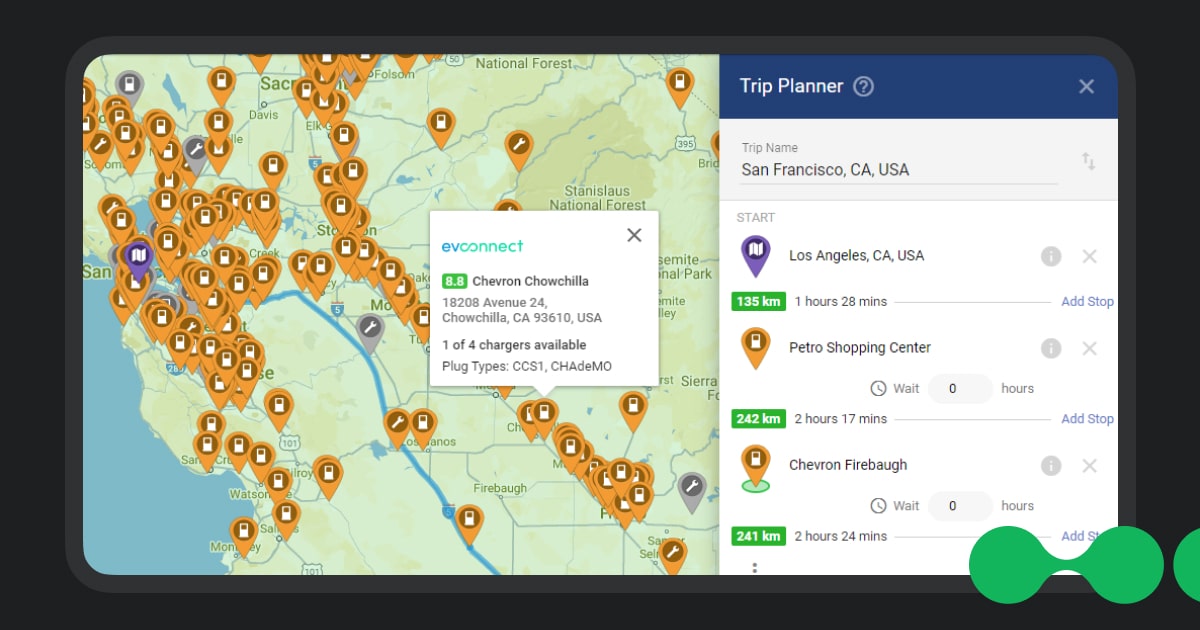
Best for: Fallback map and crowd-sourced charger photos worldwide
Use it on: iOS, Android, Web
Cost: Free, €3.49 one-off to remove ads
PlugShare’s two-million-strong community still posts the fastest “unit out of order” alerts in the EV community, fresh photos, and local access tips. Most EV drivers rely on this as a tool to get the final verification whether a charger is actually online or not.
The basic Trip Planner lets you drop way-points, set minimum power, and export the list to navigation apps.
Are You Ready to Hit the Road?

Although EV route planning in Europe depends on the vehicle you own and the countries you plan to visit, one thing is clear – we now have enough tools to make it happen smoothly. Now you know which is the best route planning app for EV, or at least which one to try out, and which tools to keep as a backup. Make sure to download the necessary apps beforehand and already make the accounts. You don’t want to do it next to the charger somewhere.
You can also save this guide while you’re at it, for ideas on the road. In case your travels take you across Estonia, Latvia, Lithuania, Poland, Slovakia, or Croatia, you can include Eleport’s chargers in the EV route planning mix with confidence.
These route-planning tools will be integrated into more electric vehicles this year, and the AFIR rules will make actual live data easier, as every European motorway is forced to publish live status and pricing, and the chargers will need to accept card payments. Meanwhile, Plug-and-Charge will finally kill the RFID shuffle. We’ll update this guide as more tools and features surface, but until then – see you on the road.


